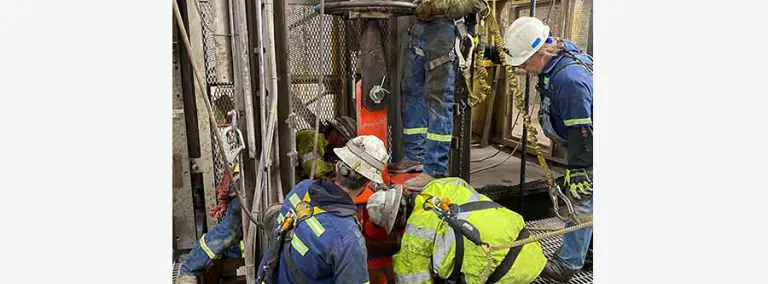SURF passes two-year workplace safety milestone
SURF is recognizing two years without an on-the-job injury that results in loss of time at work.
The Sanford Underground Research Facility (SURF) is recognizing two years without an on-the-job injury that resulted in loss of time at work.
“Our SURF team works hard to live our core values of safety focused, care for others, professionalism, and being team players. This achievement has come through years of hard work to sustain a solid culture and a world-class safety program,” said Mike Headley, Executive Director of the South Dakota Science and Technology Authority (SDSTA) and Laboratory Director of SURF. “I’m so proud of our staff, science researchers, and our contractors who have all contributed to reaching this milestone.”
Julie Ewing, Director of the Environment, Safety and Health Department, also credits this milestone to the strong safety culture across the entire organization and extends to the multiple partners who work at the facility.
“Of course, we promote safety first,” Ewing said. “I also think our other core values play into our strong culture of safety. We care for others, and that’s a big part of this milestone. We always watch out for our fellow workers, as team players. Our professionalism is a big part of this achievement. All of these things together to make safety the top priority here. I'm very proud of this, and I think all of us at SURF should be very, very proud of that as well.”
Ewing points out that much of the work done at SURF contains inherent risks—both above and below ground.
“We must recognize the risks and then work to implement planning and controls to identify, mitigate, and whenever possible, eliminate hazards,” she said. “This includes surveying the worksite each day. It includes the toolbox talks with each crew about the work that will take place. It includes a walkthrough of the worksite that identifies any safety issues we all need to be aware of. It includes proper use and training of personal protective equipment. Work does not begin until everybody understands how the work is going to occur safely.”
Ewing also points to robust training procedures, as well as SURF’s “Stop Work” policy, which states that anyone who feels unsafe or has a concern about safety can stop work.
“And that’s respected by the others on the job site. We all want to keep working to get the job done, but when we're encouraged to stop and point out if something is not right, I think that prevents a lot of potential injuries,” Ewing said.
Ewing gives credit to the leadership at SURF for fostering this strong culture of safety. Additionally, she said that, everyone is expected to be responsible for their own safety.
“As the Environment, Safety and Health director, I do not own this injury-free milestone,” Ewing said. “The organization owns this achievement. All the people here, who take responsibility for themselves every single day, own this achievement. I am so proud to work for an organization that that fosters this kind of culture.”
